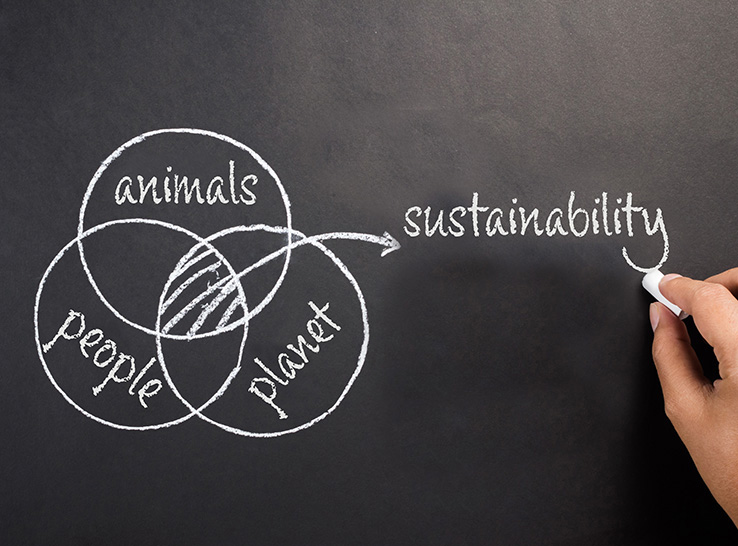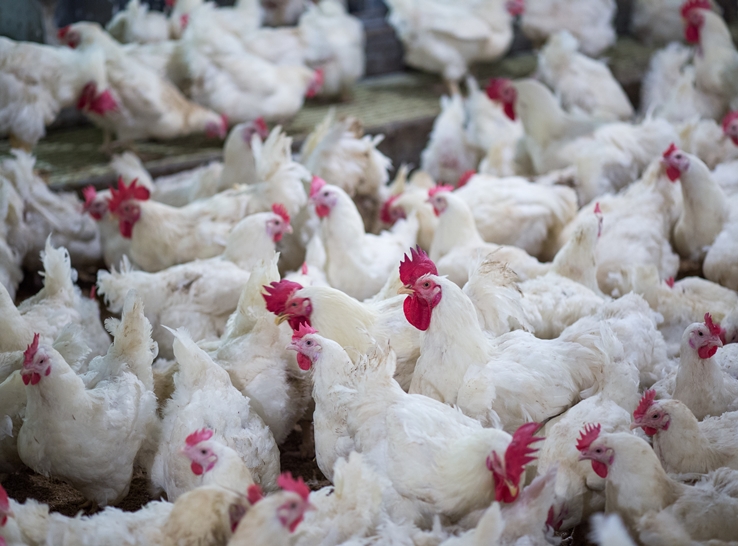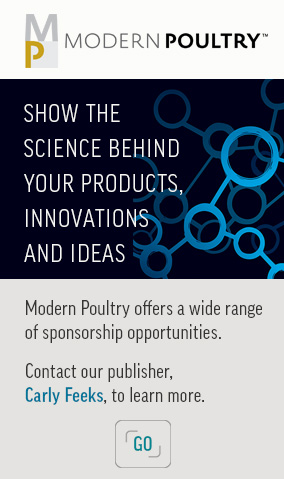First in a series
Everyone likes to talk about sustainability, but how does the concept apply to animal welfare, health and nutrition?
Sustainability issues demand significant attention today. And while it can be challenging to identify and implement strategies, sustainability will continue to drive decisions within the food-animal sector.
“Sustainability is multifaceted and needs to be discussed from many viewpoints,” said Mojtaba Yegani, DVM, PhD, an independent poultry consultant based in Georgia.
“However, the three main principles, as defined by the US Roundtable for Sustainable Poultry and Eggs, involve animals, the planet and people.”
On the farm, animal welfare, health and nutrition management lead the list of areas to address. In a series of blogs for his consultancy, The Poultry Knowledge Group, Yegani outlined ideas for food-animal producers to consider when developing sustainability measures for their operations.
Animal welfare
Adopting animal welfare practices has shown to enhance production efficiency, which in turn reduces the required resources. The United Nations Food and Agricultural Organization recently published a report: “Animal Welfare at the Heart of Sustainability.” As Yegani noted, “the title itself is very telling.”
Animal welfare measures not only help improve the production system’s environmental footprint, they also create a more positive consumer perception of the end product.
A recent survey by Midan Marketing showed that for products in the meat case, consumers generally equated sustainability with animal welfare. In recent years, animal agriculture sectors have developed welfare guidelines, as is the case with the National Chicken Council, National Turkey Federation and United Egg Producers in the US.
While improvements in animal well-being will be ongoing, Yegani cited continuous education and the training of people involved in animal production, as well as including animal well-being traits in genetic selection programs, as priorities.
“Proactive and transparent communication with stakeholders in various sectors of society also is required to improve animal welfare every step of the way,” he said.
Animal health
Animal health influences animal performance in many ways. Yegani outlined the importance of animal health as it relates to sustainability in the following areas:
- Direct impact on animal production systems — Because disease can negatively impact production performance and increase animal mortality, it also can reduce the available supply of safe, nutritious food for consumers and damage the operation’s economic viability.
- Increase the environmental footprint — Reduced efficiency and higher mortality rates associated with a disease will increase the operation’s environmental footprint.
- Consequences for human health — Animal health issues can raise the risk of zoonotic diseases, foodborne pathogens and antimicrobial resistance.
“Disease prevention and control, which includes biosecurity and vaccinations, along with diagnostics and treatment, are key to a successful animal health strategy,” Yegani said, noting that disease issues and animal health programs vary greatly across the world.
“Many areas need to improve animal health strategies. There needs to be a collaborative, innovative and solution-oriented mindset nationally and internationally.”
That will require a strong alliance among many groups, including animal farming; local, regional and global animal health entities; allied industry; government and societal organizations, he noted.
Animal nutrition
Feed makes up 60% to 70% of the total food-animal production costs, and feed manufacturing accounts for a major portion of an animal-production system’s environmental footprint. While the environmental footprint needs to be part of the animal nutrition conversation, the challenge is how to balance cost management, environmental impact and animal productivity in the process.
“The principle is to use less feed to produce more product,” Yegani said, “but improving animal productivity will remain key to any sustainability efforts.”
He offered these approaches to help improve efficiency:
- Structural and functional integrity of the digestive tract — This can be addressed by using feed additives with proven gut-health results to optimize diet digestibility and utilization.
- Use supplemental feed enzymes to improve nutrient utilization and animal performance.
- Reduce crude-protein content without compromising performance. This can provide environmental benefits; however, it requires adjusting diet formulations by using competitively priced synthetic amino acids.
- Feed mill operations — Improve efficiency and energy use throughout the feed manufacturing process. The American Feed Industry Association has published a guide illustrating how to make improvements in this area.
As animal industries become more environmentally conscientious, it is also important to develop an understanding of potential economic advantages for operations that implement these procedures, Yegani said.
See Part 2: Supply chain and consumers influence food-animal sustainability








